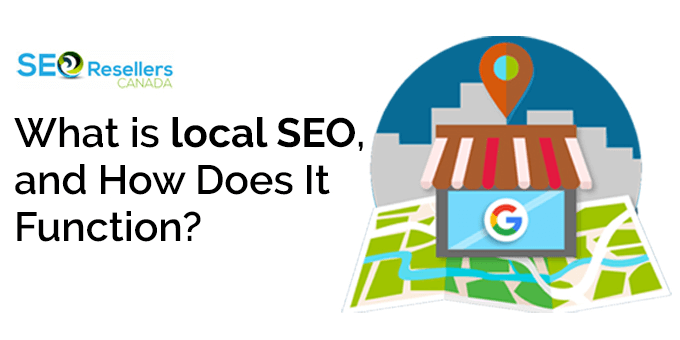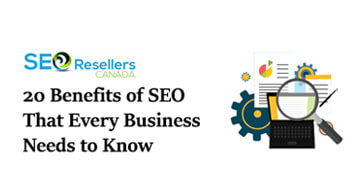Let’s get one thing straight: there is no one size fits all rule when it comes to a digital marketing campaign. Every business will have its own unique needs that need to be addressed.
There are so many moving parts to a digital marketing strategy, that it’s easy to skip the most essential ones over the less important ones. Things can get even more complicated when you throw around buzzwords such as ‘online marketing’, ‘retargeting’, ‘remarketing’, and so on. Even veterans get a little confused every now and then.
Without going into too much technical jargon, digital marketing is an umbrella term for all marketing activities done using online channels.
This article will break up important components of online marketing and help you create your own campaign that works!
1- Why is Digital Marketing So Important?
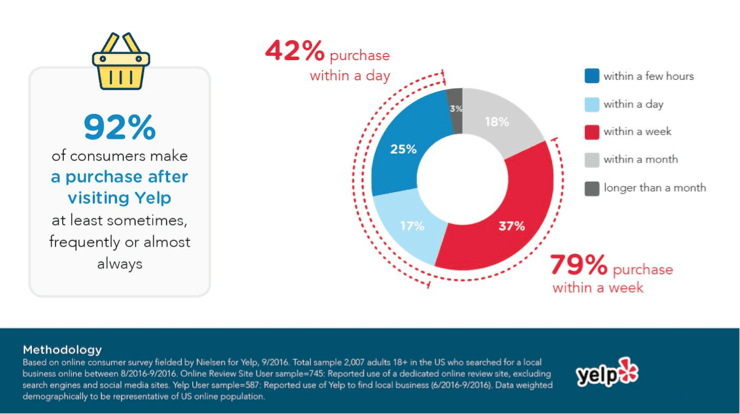
The primary role of digital marketing is to help your business get discovered and noticed. It’s all about casting a wide net to get as many eyeballs on your website as possible.
Thanks to the use of smartphones and the internet, we are connected with each other round the clock. Customers now look to the internet in search for answers to make informed decisions.
In fact, over 92% of users will look up a company’s website before buying the product or service. 93% of all online experiences begin with a search engine and 88% of customers trust online reviews. The sheer numbers prove that the world of marketing has undergone significant changes. Yet for some odd reason, the new change has made it substantially easier to position your company for higher sales since you are no longer defined by your geographical location – your audience is primarily online.
2- The Basics of Digital Marketing and How to Utilize Them
Before we get into the fine details of digital marketing, we have to first cover the basics. A good digital marketing campaign has several moving parts to it. Let’s first identify these parts to learn their role. Below is a list of the core components of digital marketing:
2.1- Essentials of a Website

Every business, both online and offline, should have its own website. This creates an online presence to help you reach more customers, which opens up more opportunities at making sales. That being said, it’s not enough to just develop a website, you have to make sure it loads in as little as three seconds.
HTTPS: Your website should have HTTPS instead of the only HTTP. The modern-day user is far more informed than ever before which means they are aware of the dangers of sending information over an unsecured website.
It is relatively easy for hackers and malicious software to see what users do over unencrypted HTTP activity. HTTPS on the other hand encrypts all user activity, including any information you type in over a secure server. The use of HTTPS becomes even more important if you process payments using credit cards. As a general rule of thumb, you should only engage in online transactions if the website has HTTPS encryption.
Responsive Themes: The vast majority of internet traffic comes from mobile phones. Moreover, 30% of all browsing sessions will be done without a screen by 2020. This is why your website needs to have a responsive and dynamic design that responds to your user’s device.
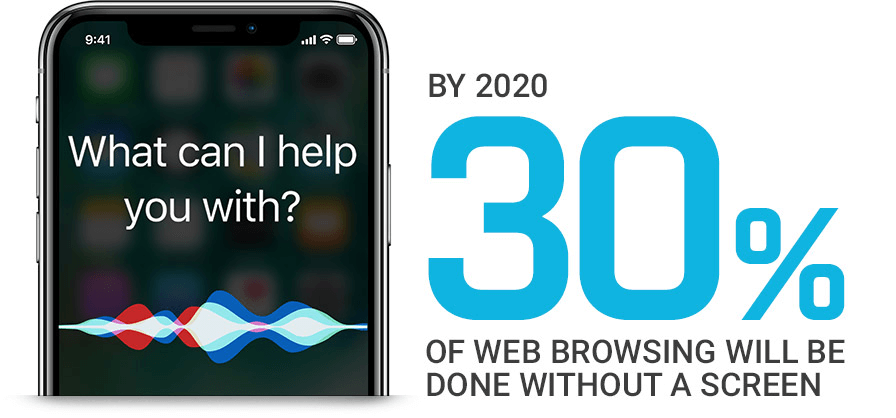
It is vitally important for your website’s dashboard and interface to incorporate a clutter-free theme and layout. Make sure all the key components of your website are easy to locate.
If at all possible, try to convince your customers and visitors to leave positive reviews. These will play a significant role in attracting leads and conversions. In fact, Google is now featuring reviews on local SERPs. This means the more diverse and plentiful your company’s reviews are, the more likely your website is going to show up on the top of a results page.
Local SEO: If you run four brick and mortar storefronts across specific locations, create four different web pages for each location. This will help search engines and users find your websites whenever they search for your company name (or a relevant keyword). If anything, those extra web pages give you more excuses to write additional content, and when it comes to SEO, relevant content is always welcome.
2.2- Organic Traffic
Search engines such as Google, Yahoo, Bing, and even DuckDuckGo.com will generate online traffic to your website. Users will discover your website when searching for a specific product or topic. If your website or online store is properly optimized, then Google (or any other search engine) will list it higher in search results. This generates higher traffic.
2.3- Email Traffic
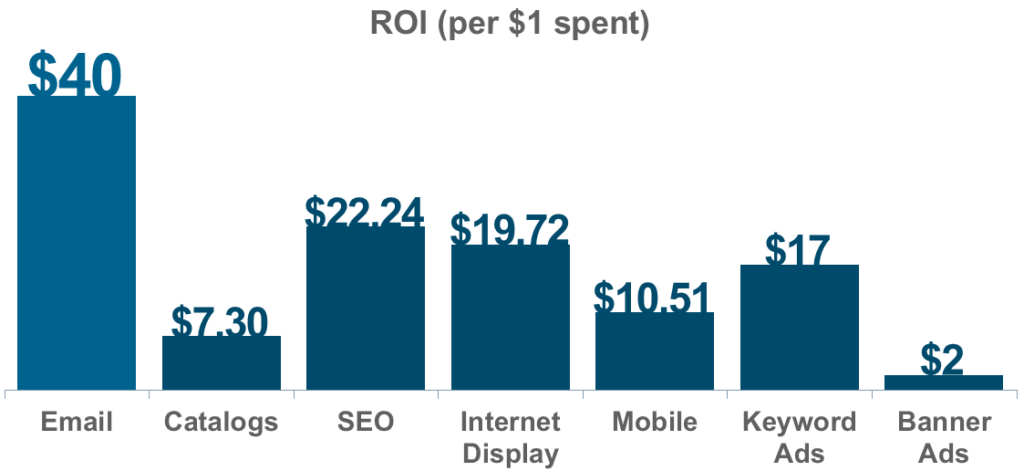
Another significant component of digital marketing is email traffic. Do keep in mind that not all links in your email contribute to traffic. To make sure you’re able to properly control email traffic, you will have to first integrate Google Analytics with email marketing software. Next, you have to make sure the medium parameter is marked as ‘email’. If neither of the two options is being met, the link will be tagged as direct traffic by default.
It is widely believed that the traffic coming from your email campaigns is more valuable compared to other sources such as organic and paid search. This is because the traffic comes from people who have already invested their time and resources in you and your company. In other words, they are further along their buyer’s journey.
This is the primary reason why email marketing is favored by marketers because it results in the highest ROI across different channels. Email traffic is a good indication of how engaged your customers and leads are. It’s easier to tell which messages work and which don’t.
Try to continuously build your email list in order to generate more email traffic. Older lists tend to become obsolete since most users either blacklist businesses or abandon their own email address, either way, your old leads could be gone in a few years’ time – so make sure to be always on the hunt!
Make sure to only send relevant emails to those people who signed up to your list. For instance, if you have parents who are interested in purchasing toys for their kids, put them in the ‘parents campaign’ list and if you have students buying books for school, they enter the ‘students campaign’ list.
It is important to give individual attention to each segment instead of muddling them up. In this way, you won’t risk sending the wrong email to parents who never showed interest in textbooks for schools.
Don’t forget to tag all the links in your email with the proper UTM tags. Otherwise the resulting traffic won’t be tracked under email traffic.
2.4- Social Media Traffic
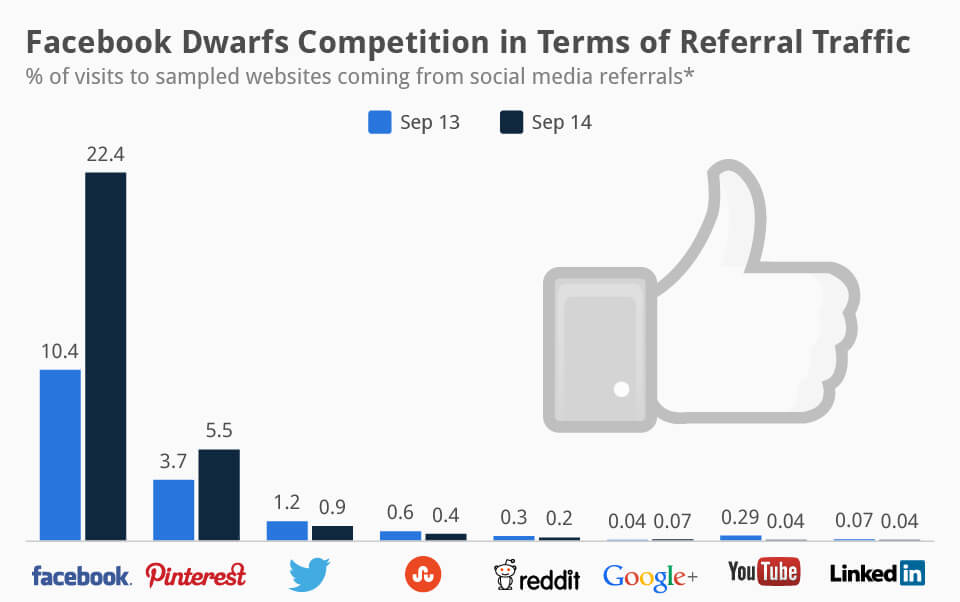
The social media traffic is important in its own right. Like search engines, traffic from social media can be paid and organic. Things are becoming more difficult for businesses that want to convert customers based only on free posts and hashtags. To get noticed, you may have to use paid adverts.
The best platforms to run ads are Facebook, LinkedIn, Instagram, and even Snapchat. Facebook, of course, has a higher conversion rate because it has more monthly active users.
2.5- Affiliate Traffic
Affiliate traffic includes any website traffic that comes from affiliate partners in exchange for a percentage of the proceeds on new sales generated. You can launch your affiliate programs on popular networks such as ShareASale.com, CJ.com, and Rakuten Linkshare.
You can create good deals for customers with coupon sites such as Retailmenot.com, cashback sites such as eBates, and getting ‘shoutouts’ from online influencers with a powerful following.
3- Digital Marketing 101 – Step by Step Guide
You will most likely find a ton of free resources on digital marketing, each promising to be ‘the’ ultimate guide for beginners, yet each guide seems to be more confusing than the next, often giving conflicting statements that make no sense.
Most folks starting out won’t be able to tell actual insights from fluff and will likely get misled, resulting in thousands of dollars in losses due to unoptimized PPC and SEO campaigns. This is why we decided to create a watered-down version of what a comprehensive digital marketing campaign looks like.
Here’s our step by step breakdown of what’s the ‘best’ digital marketing campaign:
3.1- Setting Up the Right Goals: Brand Awareness and Search Traffic
The first rule of business is to set your goals for online marketing. These goals will cover a range of different metrics to help you measure and control performance across a range of digital marketing activities. Examples of such goals include acquiring new leads, increasing conversion, and expanding brand awareness.
If you want to help people realize that you have the solution to their problems, and at a cost-effective price, then that also serves as a goal. Other examples include followers, responses to email, likes, and reaching a higher rank on search engines.
There are endless choices in digital marketing, but it makes much more sense to run campaigns that will yield real results. After all, it is no small task for a relatively new website to rank for a competitive keyword such as “mechanical keyboard”.
3.1.1- Brand Awareness
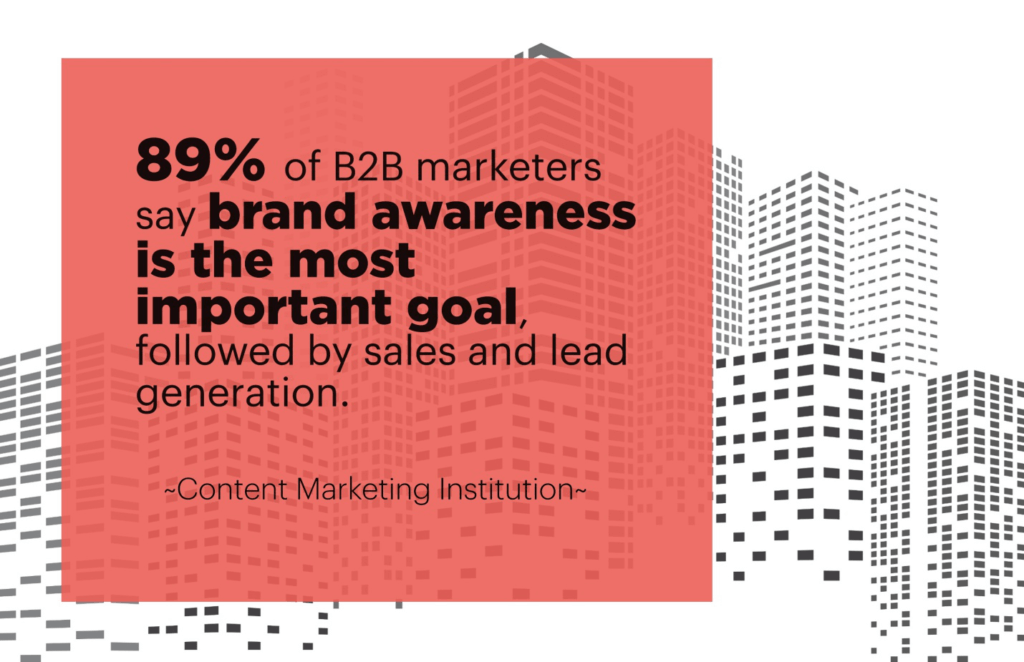
If you’re a new business, your first and foremost goal would be to focus on brand awareness. Remember, getting people to buy stuff from you when they haven’t even heard of you is a tall order indeed.
Your digital marketing campaign can help prospective customers become aware of something they need; this is also known as problem awareness. You then proceed to insert possible solutions to their problem; this is known as solution awareness.
The best example of brand awareness is Google and its search engine. When most people want to search for something using Google (or even Bing), they often use terms such as, “Google it”, instead of “use the search bar to find the answer”. This is brand awareness at its highest level, and it will take you a long time to get here, but for now, let’s at least focus on covering the basic ground.
3.1.2- Traffic
Increasing traffic to your website is not as easy as it sounds. Sure, you can ask your friends and family to visit your website and like your social media pages, but what you really need is a proper digital marketing campaign. You can run ads on search engines, social media, and even win favors from social media influencers. Remember, slow and steady wins the race!
If you have at least 1000 followers on social media, you can ask them to sign up for your newsletter. Ask your current roster of clients to follow your social media pages. You can incentivize this by giving them coupons or a gift.
It takes a lot of coaxing and convincing to get people to the point where they are willing to shell out money on your products and services. Savvy marketers kick start brand awareness with the help of lead generation.
Once you have set proper goals, make sure you take the proper course of action in order to make your digital marketing campaign a success.
3.2- Defining Your Target Audience – who, what, why, and where?
What is your target demographic? There are many ways of defining who your clients are by running analytics on competitor websites. If you already have a website that generates meaningful traffic, try to use tools such as SEMrush and Google Search Console to create what is known as a ‘target audience profile’.
Once you have nailed down the ‘who’, ‘what’, ‘where’, and ‘why’ of your potential customers, you can start creating the most appropriate marketing campaigns for them. Customer insight lets you create precise marketing campaigns that result in higher conversion rates and ROI, both of which are important metrics that matter to all digital marketers.
4- Build a consumer profile using the following data points:
Age: when it comes to age, you’re not looking for something too specific here. All you need is a range of ages for your customers. It helps to know which decade your customers are from. After all, it would be pointless to refer to the 80s if your audiences are from the 2000s and vice versa.
Location: Knowledge of the location where customers come from can be used to improve digital marketing by making it more effective and personal, driving up sales and profits. More importantly, you will be able to tell which hours of the day (or night) are most relevant for your customers, and when exactly you should schedule Google Ads and social Ads to maximize visibility.
Buying Power: How much disposable income do your customers have? How sensitive are your customers to price hikes? If your consumers don’t have a high enough buying power, they probably won’t be investing in your products and services any time soon. This means you should likely focus your digital marketing efforts elsewhere.
The data points discussed above will differ based on your business model. If you sell products to businesses, your categories will look drastically different. In this case, you may want to collect data about the size of business that wants to buy from you, and information about the people who will make buying decisions.
If you have an active presence on social media, it makes sense to run social media analytics to see who’s interacting with your social accounts, even if they haven’t converted yet. The good news is that Facebook, Twitter, Instagram, Pinterest, and others have simplified this process. You can run analytics on all major social networks for free; it’s just a matter of learning how to use them.
4.1- Define Your Budget
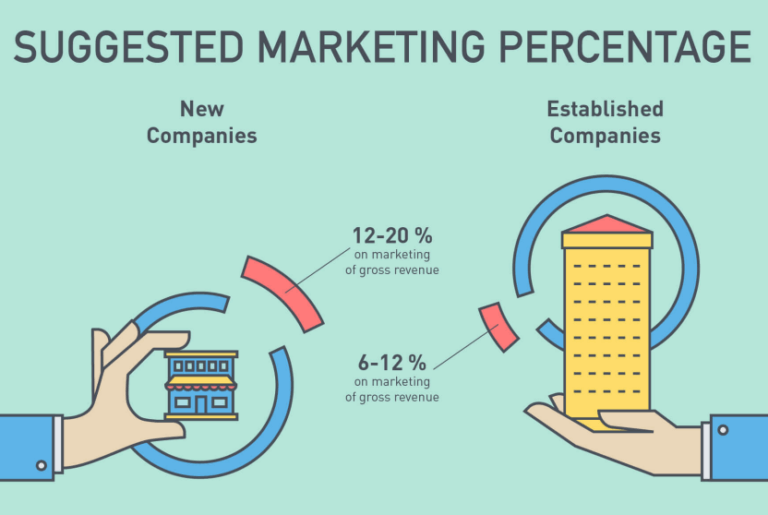
An effective, accurate budget is a critical asset when it comes to digital marketing. And it will only become more important when your ability to spend on advertisements increases. Yet most businesses often ignore the most crucial part of their campaign. How much money are you willing or capable of spending?
Your budget will depend on the industry, company size, brand awareness, company history, and your overall goals. In recent years, companies like Salesforce, Mindbody, Tableau dedicate a significant portion of their revenue (20% to be precise) to marketing, with some spending over 50%. Yet other companies like Apple will only invest 6% of this (which is a whopping $16 billion!).
5- Allocating the Marketing Budget
Your marketing tools are one of the most important assets of your marketing budget. According to a report by Garter, most companies spend about 30% of their marketing budget on marketing technology. This number is only going to increase in the coming years as dependency on intelligence tools increases. Access to the right marketing suite can save you several hours a day and makes it much easier to reach your target audience in an effective manner.
The most common examples of digital marketing technology are the following:
- Social media scheduling: Buffer, Crowdfire, Hootsuite
- Marketing roots: Google Analytics, Databox, Megalytic
- Marketing automation: Marketo, Keep
- SEO: BuzzSumo, Google Keyword Planner, SEMrush, Moz
- Email automation: Mailchimp, Constant Contact
- CRM: Hubspot
The ultimate goal of your marketing budget is to make your company easier to find. And this starts with search engine optimization. This is one field that is getting increasingly competitive. Both content marketing and SEO must be focused on keywords that convert and are generally easier to rank for. If done right, SEO can easily give you high returns and more than easily make up for its loss in cost.
Make sure to keep this in mind before hiring a digital marketing company. Start by asking yourself an important question: how much revenue do you want or expect to see? If you are running an ad campaign on Google at a budget of $5,000 per month, and your product margin is $25, you will have to generate 200 sales from the ad campaign to break even. Make sure to account for your profit margin before committing to an ad campaign.
If you need more information about what your marketing budget should look like, set up a time to talk with a professional at SEO Resellers Canada.
5.1- Utilizing the Proper Digital Marketing Channels
You want to utilize as many digital marketing channels as possible for the greatest returns. It is important to utilize the most appropriate channel to communicate. For instance, if you are a B2B company, you should not use the same channels as a B2C company.
Start by advertising on social media sites like Instagram, LinkedIn, and Facebook. Most of these platforms will give you discounts for starting a new campaign. Utilize email marketing to send notifications and changes to your clients. Although most emails will be largely ignored by your clients, some will eventually get noticed and lead to an increase in conversion.
5.2- Do Keyword Research for Both PPC and SEO
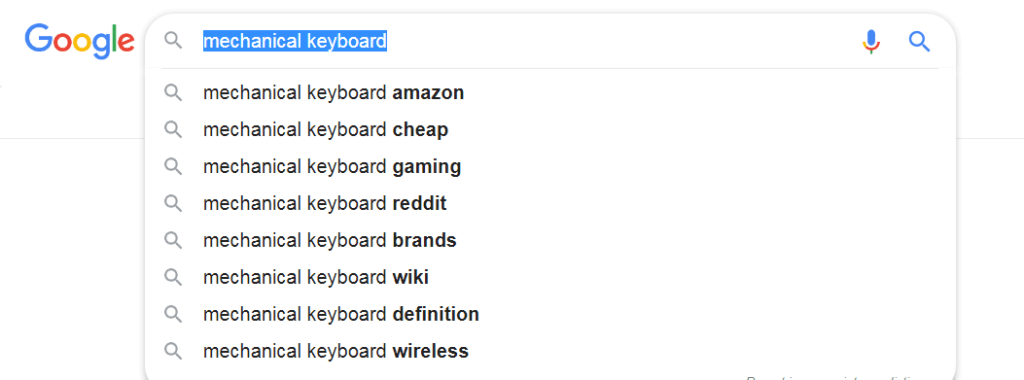
If you plan on running PPC campaigns on Google, Bing, and other search engines or optimize your website for search engine optimization (SEO), you will need to do appropriate keyword research. The best way to find relevant keywords is to think from the customer’s perspective. For instance, if they want to buy pizza, what terms indicating commercial intent will they type in the search bar? Google is actually pretty good at letting you complete your search through autofill.
Autofill lets you get an idea of what customers are actively searching for.
The search bar shows that interested buyers often use Amazon to buy their mechanical keyboards. They visit public forums like Reddit and wikis to check out public opinion. Furthermore, a considerable number of customers want mechanical keyboards that are also wireless.
These are clues that let you focus on customer pain points and adapt your online store (or website) accordingly.
Alternatively, you can also use sites like Answer The Public. Type in any search term and the website will provide you with a list of questions that people search for based on the keyword. As you can see below, these are all questions people ask about mechanical keyboards.

The process for PPC is slightly different because you have to also account for the cost per click of each keyword and then place an ad accordingly. With PPC you should be focused on how much each keyword will cost when a customer clicks on the ad and the monthly search volume. Your objective should be to keep the cost per click (CPC) as low as possible while reaching the largest number of users possible.
You can learn more about optimizing PPC campaigns and Google ads in the segment below.
5.3- Optimize Google Ads Properly
If it’s your first time running a PPC campaign on Google, it is extremely important to optimize your ad units because every mistake will cost you heavily.
Google Ads has three categories of keywords that every advertiser should be well acquainted with:
- Phrase match
- Broad match
- Exact Match
Most people use the wrong keyword match type since they are not aware of the subtle differences between them.
5.3.1- Broad match
When you choose broad match keywords, your ads will be triggered whenever someone searches your choice of keywords. This is true regardless of the order of the words typed in the search engine. So, if you are running ads for “best mechanical keyboards”, your ads will show ads for “best mechanical keyboards”, “best mechanical keyboards to buy”, “best mechanical keyboards for gamers”, etc.
Although there is a lot of potential for generating sales by choosing a broad match, there is a high chance that your ads will show even if searchers don’t show clear commercial intent. Remember, broad matches are triggered as long as only a few of your target keywords are being utilized in the search string.
5.3.2- Phrase match keyword
These ads only get triggered if prospects search for your keywords in the exact order. For example, if your phrase match keyword is “best mechanical keyboard”, your ads will only trigger if prospects type in, “best mechanical keyboard”.
Your ads may show up in related keywords, but the condition for this remains the same, i.e., the prospect must type your target keywords in the exact order for your ad to show. This means your ad will show for “where to buy the best mechanical keyboard”, etc.
Enclose your keywords in double quotation marks to let Google know you’re targeting phrase match keywords.
5.3.3- Exact match keyword
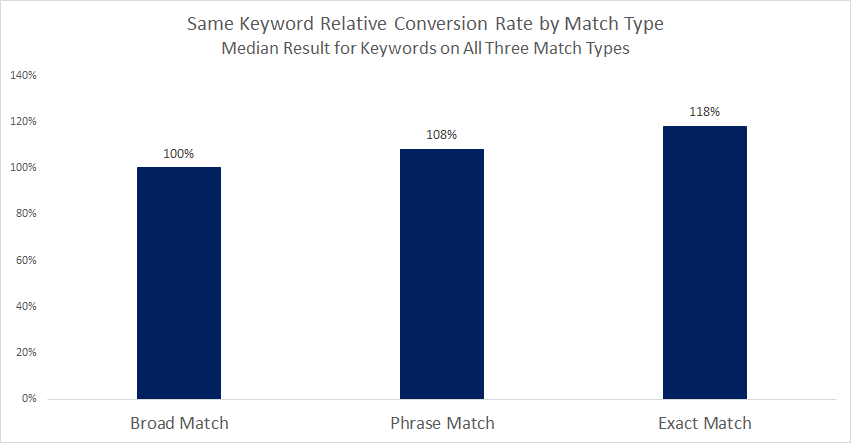
These ads will only show if prospects type the exact keyword you are targeting. Using the “best mechanical keyboard” in your ad means that it won’t show when people search for “where to buy the best mechanical keyboard” or “best mechanical keyboard online”.
You can add exact keyword matches by enclosing the keyword in squared brackets, like this: [best mechanical keyboard].
Studies have shown that exact match keywords convert better than phrase match and board match keywords, even though the number of average monthly keyword searches is lower compared to broad.
Most experts believe that the best solution is combining all three types of keyword matches and strategically bid them using a system known as cascading bids.
Cascading bids is when you set the highest bids for exact match keywords, lowest bids for broad match keywords, and a medium bid for phrase match keywords.

5.4- Setting Up Remarketing Campaigns
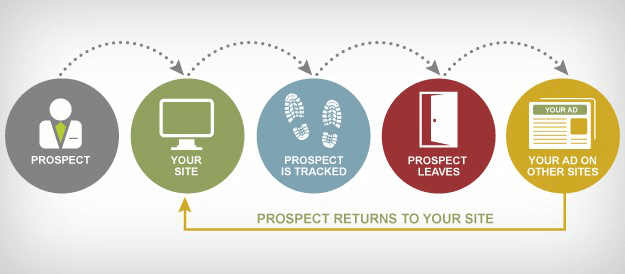
Remarketing lets you recapture sales and leads that may have ignored you the first time around. Remarketing is all about focusing on people who visited your website or browsed your product but never converted. Since they expressed interest in visiting you, it makes sense to retarget them with Google Ads and emails.
With remarketing, the customer is further up in their buyer journey and doesn’t need as much convincing as they did before. They already know what their problem is and how your business is the potential solution. It’s just a matter of retargeting them with your information to increase the chances of them converting on your website.
In fact, studies show that retargeted ads are 70% more likely to result in conversions!
5.5- Developing Your Content Marketing Strategy
They say content marketing is king. They’re not wrong.
In fact, content is one of the most essential components of your digital marketing strategy, so long as it is original, unique, and helpful. You could argue that content marketing forms the backbone of SEO.
But not just any 500-word blog page with generic and unhelpful content will do. Many companies miss out on their opportunities since their vision for content marketing is too narrow. They may be creating a ton of content to rank, but Google is largely ignoring them.
What gives?
In order to drive traffic (and convert leads into sales), your content has to be ‘perfect’ and better than what is already out there. After all, what is the point of creating content in the first place? Is it to serve you or the website? The main purpose of writing content is to deliver the right information to your customers and help them in the customer journey, without shoving your products and services in their face!
But content isn’t just about blogging. This is the biggest misconception marketers have about content marketing. Although blogs are a core component of digital marketing they only form a part of the bigger picture.
Even the products page that shows important details such as pricing and shipment is considered to be content.
So, what is ‘perfect’ content marketing? Perfect content engages customers during all three phases of their journey. These 3 stages include the following:
- Awareness: This is when the prospect is not aware of your business. They do not know that you have the answer to their problems. This is where your blog comes in.
- Evaluation: Once your customers become aware of your business, they will now evaluate the various choices available to them, including offerings from your competitors.
- Conversion: Once customers have moved through the second stage, they are now ready to ‘convert’ and buy your product or service. At SEO Resellers Canada, our goal is to convert leads into high-quality buyers.
Your content must facilitate awareness, evaluation, and conversion. The same blog post doesn’t have to engage all three components. In fact, your content marketing strategy can be spread out across all three stages of the customer journey.
For the most part, blogs are good at increasing brand awareness, but they aren’t as good when it comes to evaluation and conversion. This is where you will have to refer to other types of content. Think infographics, quizzes, surveys, software downloads, webinars, and even mini-classes. If you sell services, consider giving free trials for 14 days to let customers decide for themselves if you indeed have the solution to their ‘problem’.
5.6- Developing Your Search Marketing Strategy
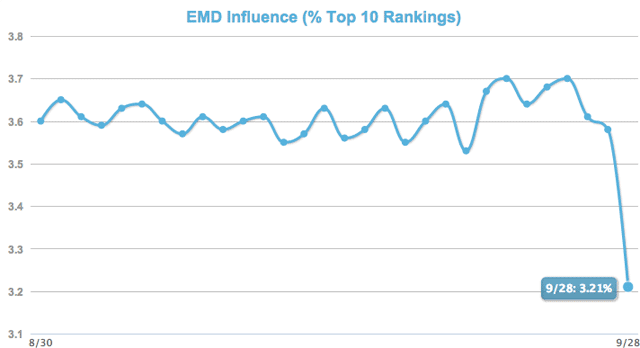
Search engines like Google and Bing roll out major changes every 6 months or so. Minor updates at a rate of almost 9 per day are normal for Google. This is because search engine algorithms are not static and are based on artificial intelligence, which learns new things every day.
Some of these changes will catch most websites by a surprise and tank their rankings as a result. A good example of dramatic events that can literally destroy a website’s ranking in Google’s infamous 2012 Exact Match Domain (EMD) update.
Websites that exclusively depended on their domain name to rank higher fell off the first page of the internet, and those next in line, the ones that actually offered something of value to customers took their place.
If you want to rank your website and ensure it retains its ranking, then you will have to stay on top of algorithm updates. If you’re able to tap into search marketing, you can boost website traffic, which automatically uplifts visitor trust, while lending support to other areas of digital marketing.
5.7- Search Engine Optimization and Its Two Components
i) The technical details such as meta tags, meta details, and alt text. This also includes creating an XML sitemap which is one of the more fundamental steps when it comes to creating a digital marketing campaign.
ii) The content side of things where you develop SEO-optimized content, create links to and from websites and maximize shares on social media.
Which of the two is the best? When it comes to SEO, you can’t pick either side because they’re two sides of the same coin. One can’t coexist without the other supporting it. To succeed in digital marketing activities, you will need both search components.
Another thing about SEO is that it is not set in stone.
Just because your website is ranking well now, won’t mean that it will stay that way forever. Thousands of other websites are engaged in a battle to achieve the number one position in search engines and rank for their target keywords.
5.8- Reputation Management
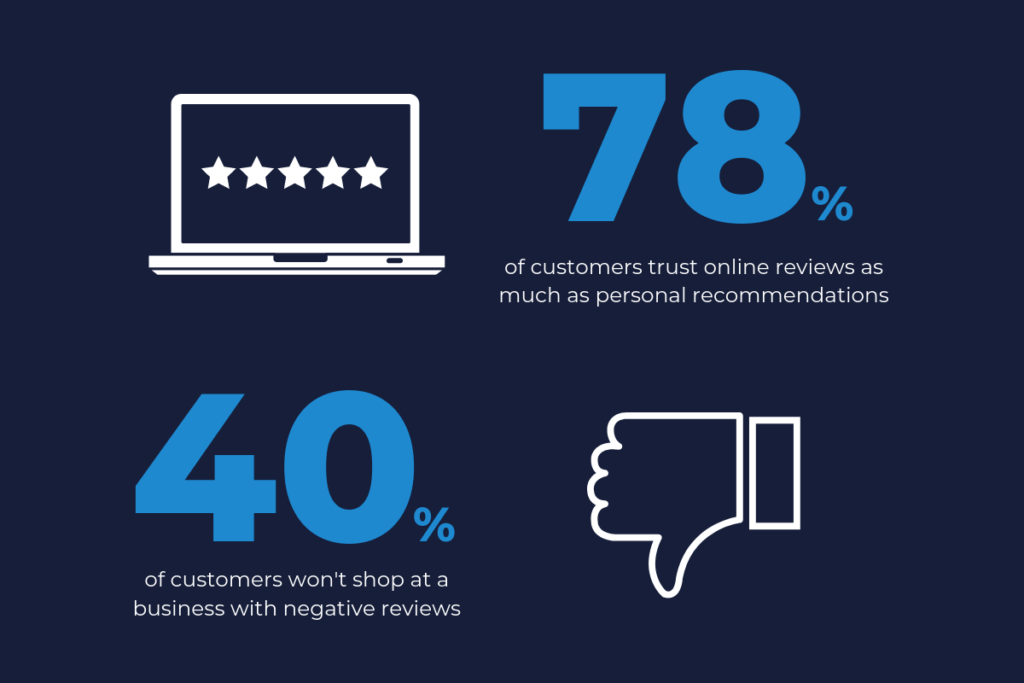
It is said that one bad review is enough to counter ten good ones. This shocking truth is both effective and counter-intuitive at the same time. It is effective because when someone leaves a positive review on websites such as TrustPilot or BBB, other viewers are encouraged to try your product.
It is counter-intuitive because if someone decides to leave a negative review, it is probably enough to deter prospective customers. It is a fact that most online reviews are fake and can be posted by anyone who registers a new account – some review sites have literally no checks and balances.
But you can take control of your business’s online reputation by posting good blog posts and refuting negative reviews as and when they occur. For instance, when someone leaves a negative review on your Better Business Bureau (BBB) page, make sure to address their grievances if they are genuinely disappointed with your services. And if it is a fake review, don’t be afraid to call it out.
In fact, you should report any fake reviews to BBB, TrustPilot, and more to discourage this practice.
5.9- Social Media Optimization
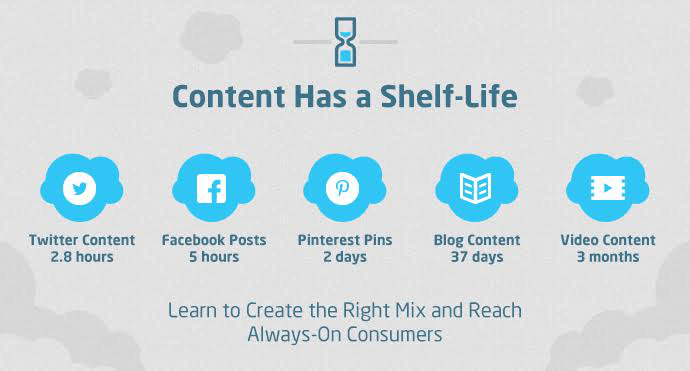
It is crucial to maintain a constant social media presence to engage customers from all available venues possible. Your social media strategy is most effective when it is played out across multiple platforms including Twitter, Facebook, Pinterest, Instagram, and even YouTube.
Build a powerful Instagram page and create social media content that is both engaging and relevant. This can include advertising contests, sneak peeks, promotions, polls, and links back to insightful blogs. Once again, the idea is to not only drive traffic but to get people to engage with the content that’s on it.
Update your social media profiles frequently and try to keep up with the times. If you leave your social media page unattended for too long, it will become obsolete. The key to capturing and holding your audience’s attention is to post on a regular basis, or at least 2 to 3 times a week for all platforms. It is just as important to use hashtags. Think of hash tags as the search engine equivalent for keywords. Every time someone types the hash tag associated with your Instagram, Twitter, or Facebook post, your post is bound to show up.
If you run a local business such as a restaurant or hair salon, make sure to create a Google My Business page. Google My Business is particularly important if you want to run local SEO campaigns. Just make sure to create only one page per business because Google is known to hurt local rankings if it detects duplicated My Business Pages!
You will notice that certain customers will reach out to your social media profiles every now and then. After all, that is the entire point of social media profiles; to let viewers ask you questions and leave their opinions. Make sure to respond quick enough to both positive and negative comments and be extremely polite. This will communicate to your viewers that both you and the company are concerned and attentive towards creating a great customer experience.
For most customers, this is all the incentive they need to buy your products and services. They know you care about bad reviews and will go to great lengths to ensure their investment is safe and sound.
SEO Resellers Canada specializes in digital marketing campaigns and has helped thousands of clients reach the front page of the internet. Talk to our representatives today to learn how we can help you get there!






















